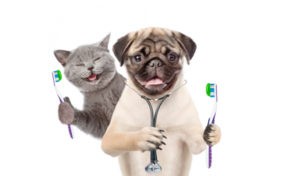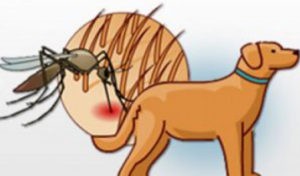 Dogs and cats are primarily meat eaters, their teeth are designed specifically for catching and killing prey out in the wild. However, even though the majority of dogs and cats no longer need to hunt their teeth are still quite similar to their hunting ancestors. Our pet’s teeth need a little extra help to be kept clean and healthy. As we covered in last week’s Blog the majority of dental problems stem from under the gum line. Gums should be pink in color with no redness or bleeding. If you notice that your pets breath is starting to smell distasteful this could be a sign of dental disease. You pet shouldn’t be experiencing pain or discomfort while eating and ideally teeth should be white and clean. One way of maintaining a healthy mouth is the use of a dental diet.
Dogs and cats are primarily meat eaters, their teeth are designed specifically for catching and killing prey out in the wild. However, even though the majority of dogs and cats no longer need to hunt their teeth are still quite similar to their hunting ancestors. Our pet’s teeth need a little extra help to be kept clean and healthy. As we covered in last week’s Blog the majority of dental problems stem from under the gum line. Gums should be pink in color with no redness or bleeding. If you notice that your pets breath is starting to smell distasteful this could be a sign of dental disease. You pet shouldn’t be experiencing pain or discomfort while eating and ideally teeth should be white and clean. One way of maintaining a healthy mouth is the use of a dental diet.
There are three different kinds of dental debris:
• Food particles
• Plaque
• Calculus (tartar)
Food particles are easy to remove. However, Plaque is very sticky and adheres to the tooth extremely tightly and can only be removed with a tooth brush. If plaque is left along the gum line long enough it hardens into a barnacle like crust referred to as calculus or tartar. Anyone who owns a boat will know that barnacles are almost impossible to remove! The only way to remove calculus is the use of an ultrasonic dental cleaner during a dental prophylaxis with your veterinarian. The buildup of calculus on teeth can often create a pocket under the gums where bacteria and food debris can accumulate. This will lead to inflammation and infection of the gums. If left untreated, this inflammation can lead to periodontal disease and the extensive loss of teeth.
Dental diets work in two ways to help reduce the accumulation of plaque and tartar:
• Mechanical action- Dental diets use a larger kibble size and a specialized shape to encourage increased chewing. The kibbles are constructed to withstand deeper tooth penetration before crunching to pieces which will create a scrubbing action. This action acts almost like a tooth brush to reduce the amount of plaque on the teeth.
• Tartar and plaque reducing ingredients- Reduced protein and calcium limit the mineralization of plaque and tartar. Polyphosphates are often added to bind with the calcium in saliva and make it unavailable for the formation of tartar.
Dental Diets should be used in addition to daily brushing and professional dental cleanings. In order for dental diets to work well for your pet they must be fed alone. If you have any questions about getting your pet on a dental diet or would like to find out more information about keeping your pets mouth healthy fell free to contact us and we would be more than happy to help!
This blog post was written by McQueen Animal Hospital, a veterinary clinic in Brampton providing quality affordable veterinary care




